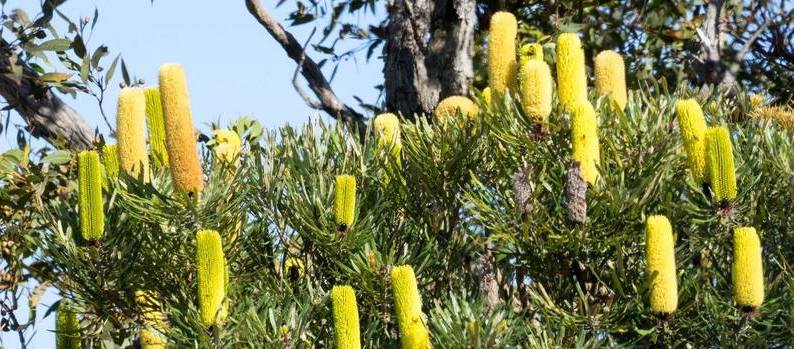
In this blog series we look at the indigenous trees of the Peel/Bindjareb region. This month we profile the candlestick (or slender) banksia. Banksia attenuata is known as 'biara' in the Noongar language. The common names refer to the tall flowers that are displayed prominently above narrow, serrated leaves. Bright green in bud stage, they mature to a sulfur-yellow colour.
During spring and summer in Mandurah, the striking yellow flowers of Banksia attenuata are like beacons in the bush. They provide food for honeyeaters and honey possums, who in turn pollinate the flowers. The mature cones attract the threatened Carnaby cockatoos, which also eat insect larvae hidden in the bark.
The home gardener might prefer to seek out the dwarf from of Banksia attenuata, which grows to a more manageable height of around two metres. Great for waterwise gardens, this plant is both drought tolerant and thrives in sandy soils.
Interesting facts about Banksia attenuata:
- The cones (mungitch) were used by First Australians to carry fire whilst travelling
- Fossilised cones have been dated to 18 million years, making it one of the most ancient living banksia species in WA
- The tree can live for up to 300 years
- Can re-sprout from its base after bush fires, which also help the seed germinate
Branching Out Tree Care, professional tree loppers Mandurah
